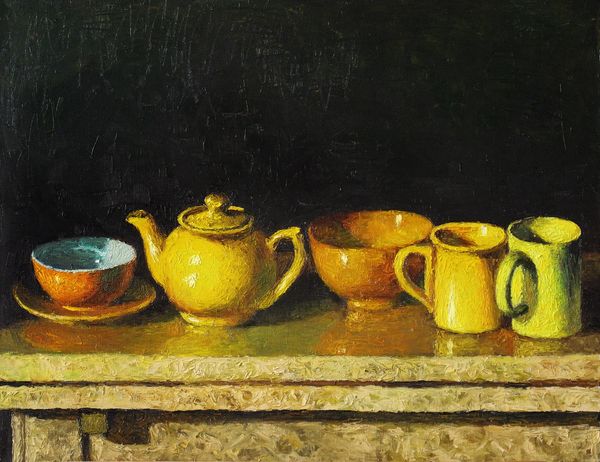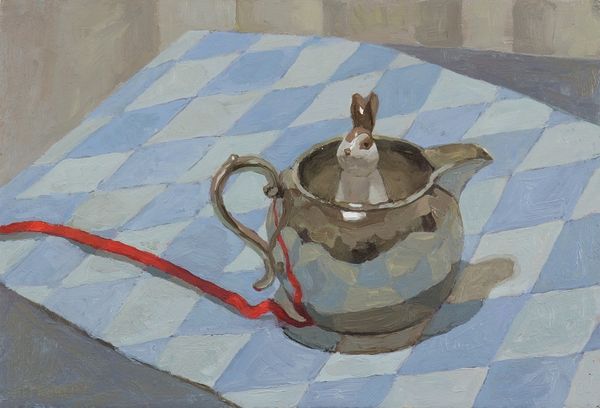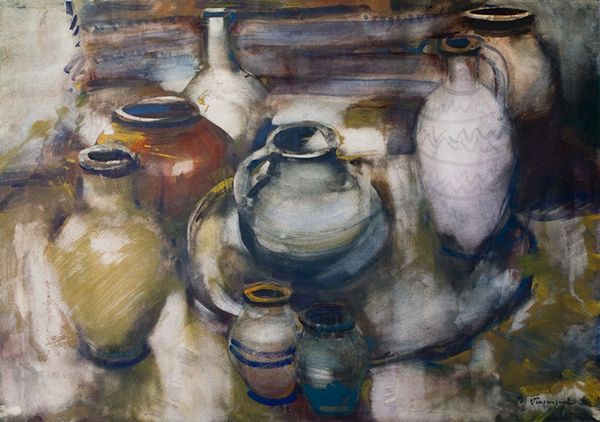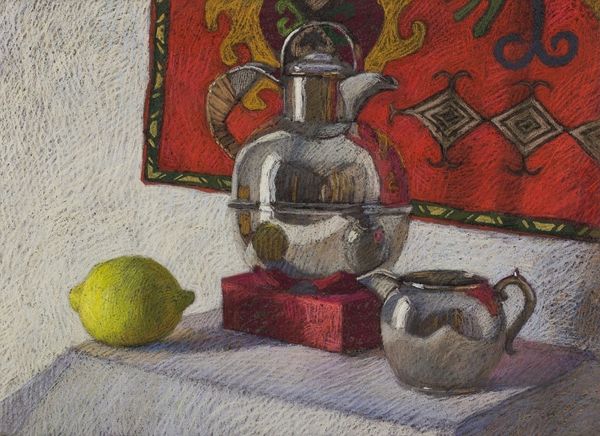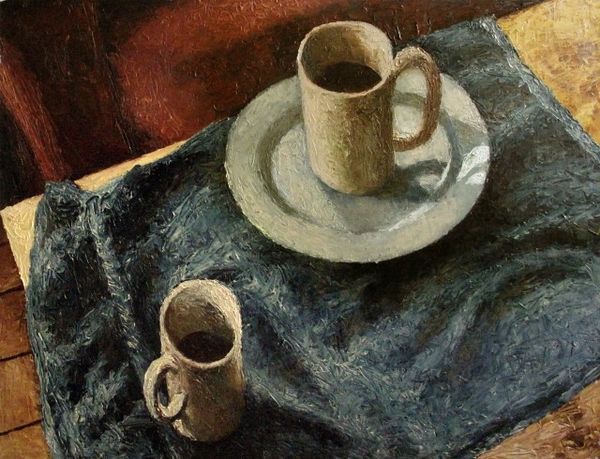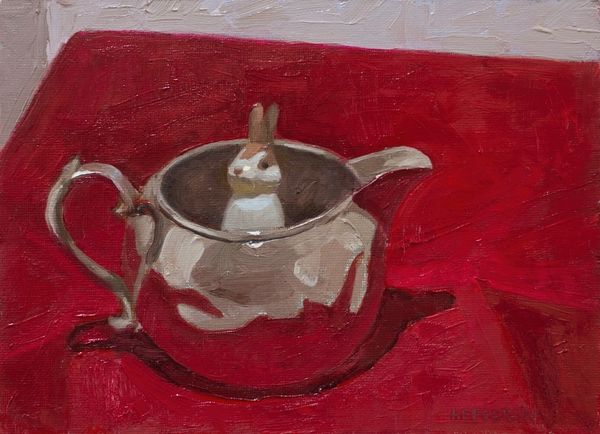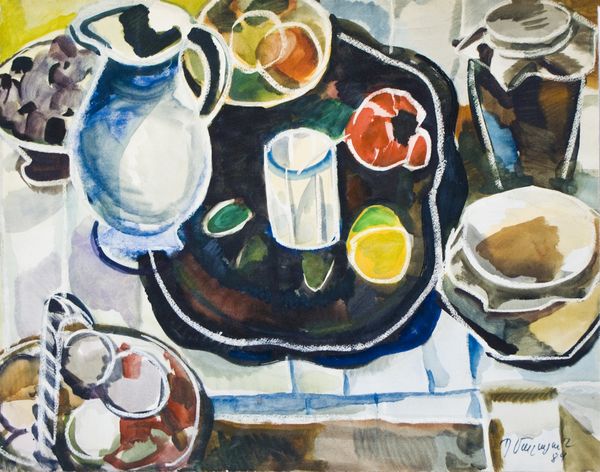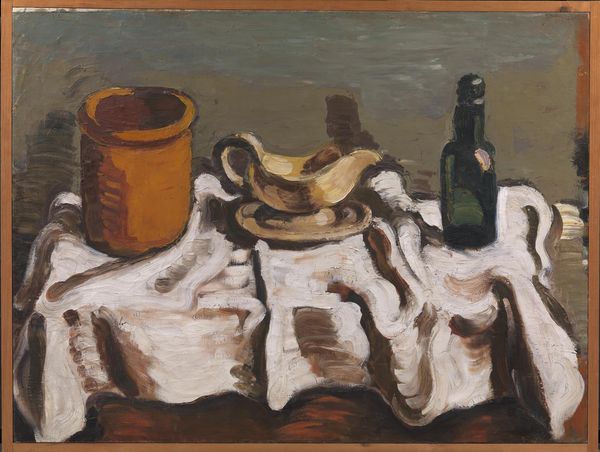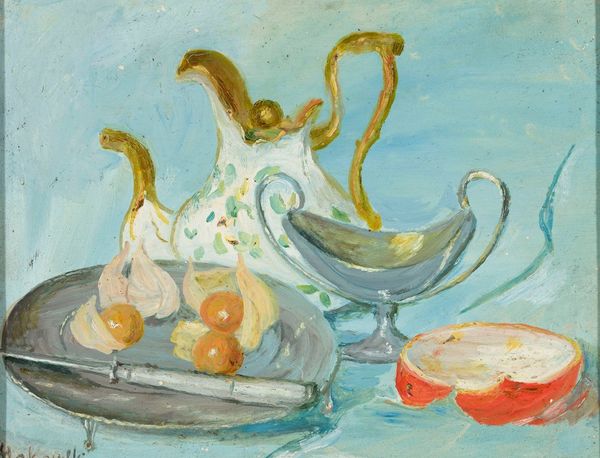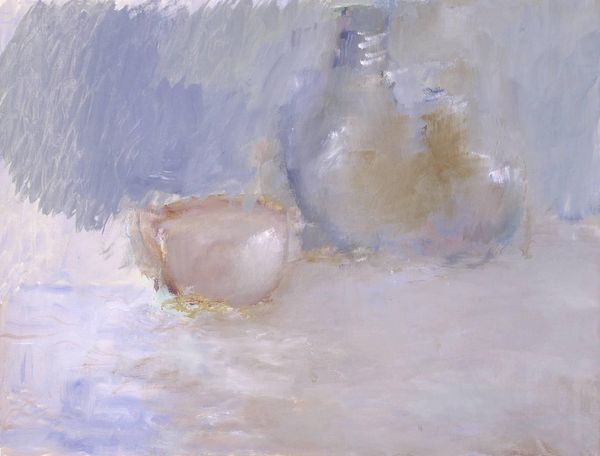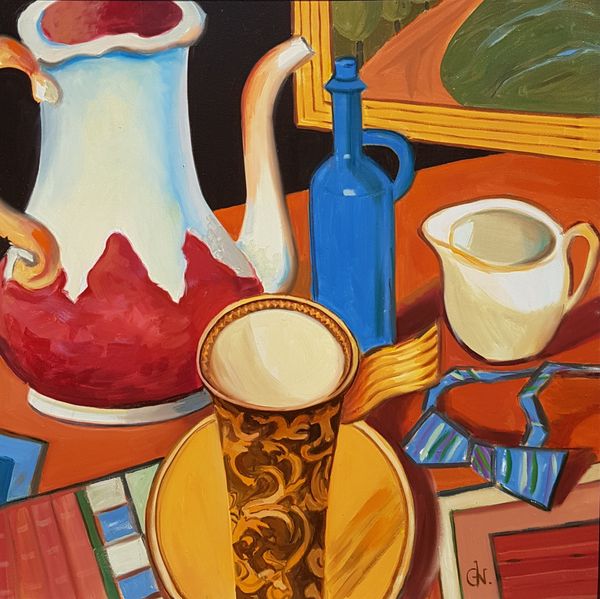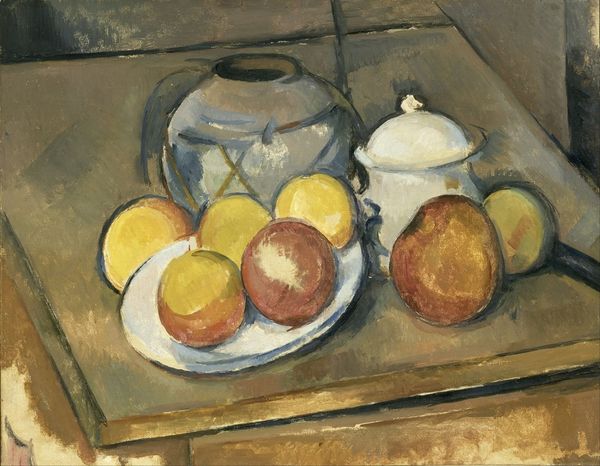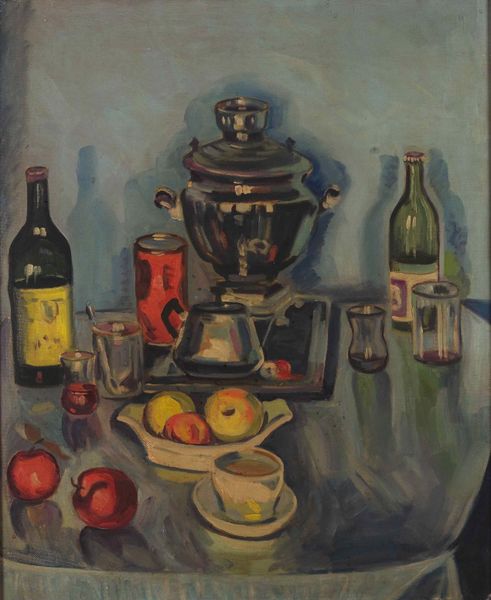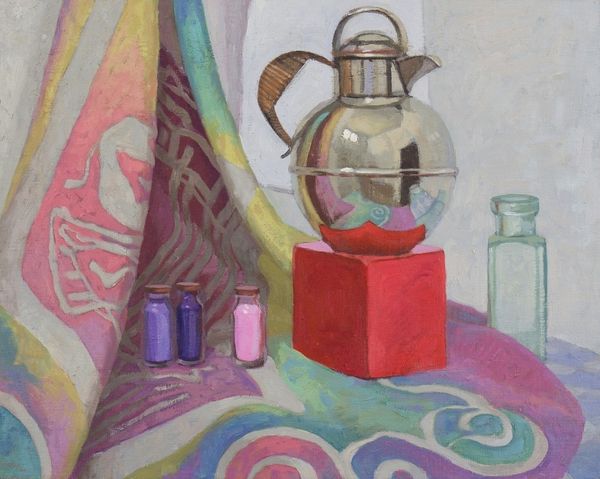
Dimensions: support: 438 x 571 mm frame: 610 x 740 x 95 mm
Copyright: © Desmond Banks | CC-BY-NC-ND 4.0 DEED, Photo: Tate
Curator: Nicholson's "Silver," held at the Tate, presents a collection of gleaming objects rendered with a striking sense of light. Editor: The surface quality is what immediately grabs me, the impasto reflecting light like the metal itself. It's almost tactile. Curator: Absolutely. The arrangement suggests more than just a still life; silver services were often a signifier of social status. Editor: The artist's focus on the materials—silver, paint, even the wooden support—speaks to the value placed on craftsmanship during this period. Curator: How might we also consider the social implications of depicting such wealth, especially in the context of early 20th-century England? Editor: It really makes you consider who had access to such items, and who was producing them. The glint disguises a whole world of production and labor. Curator: A compelling point. Nicholson’s focus then prompts a deeper inquiry. Editor: Yes, seeing how the painting itself acts as a material object that reflects these social and economic structures in its very creation.
Comments
Join the conversation
Join millions of artists and users on Artera today and experience the ultimate creative platform.
tate 7 months ago
⋮
Many of Nicholson's still lifes show his love of lustrous surfaces. In them be explores how varied textures reflect light in different ways. Here this is seen admirably in the contrast between the finer silver of the salver in comparison to that of the teapot and hot water pot. This is one of several paintings that Nicholson made for E.V.Lucas, the essayist and assistant editor of Punch, who died in 1938. Gallery label, September 2004
